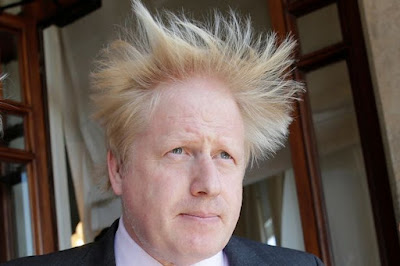The firmer than expected US CPI did not change expectations that the Federal Reserve will hike the Fed funds target by 50 bp on June 15. What it did was boost the chances that the 50 bp steps will continue through at least November. The market also sees a greater chances of a 75 bp move.The reaction to the ECB's indication that it could raise rates by 50 bp in September failed to impress the foreign exchange market. By the end of Q3, the ECB may have hiked by 75 bp and the Fed by 150 bp. Japanese officials expressed concern about the pace of the yen's decline ahead of the weekend, while many market participants focus on the level. The stronger than expected US inflation and the rise in US rates to new highs blunted the impact of the verbal intervention as the
Topics:
Marc Chandler considers the following as important: 4.) Marc to Market, 4) FX Trends, Featured, newsletter, USD
This could be interesting, too:
Nachrichten Ticker - www.finanzen.ch writes Die Performance der Kryptowährungen in KW 9: Das hat sich bei Bitcoin, Ether & Co. getan
Nachrichten Ticker - www.finanzen.ch writes Wer verbirgt sich hinter der Ethereum-Technologie?
Martin Hartmann writes Eine Analyse nach den Lehren von Milton Friedman
Marc Chandler writes March 2025 Monthly
The firmer than expected US CPI did not change expectations that the Federal Reserve will hike the Fed funds target by 50 bp on June 15. What it did was boost the chances that the 50 bp steps will continue through at least November. The market also sees a greater chances of a 75 bp move.
The reaction to the ECB's indication that it could raise rates by 50 bp in September failed to impress the foreign exchange market. By the end of Q3, the ECB may have hiked by 75 bp and the Fed by 150 bp.
Japanese officials expressed concern about the pace of the yen's decline ahead of the weekend, while many market participants focus on the level. The stronger than expected US inflation and the rise in US rates to new highs blunted the impact of the verbal intervention as the fundamental driver was underscored. The next rung in the intervention ladder may not be material intervention, but the G7 reaffirming that while exchange rates should be left to the markets, excess volatility is undesirable.
In the big picture, we had correctly anticipated that the weaker dollar seen in the second half of May is over. The question now is whether the greenback is on its way to new highs, leaving aside the yen. The market seems increasingly concerned that the more aggressive monetary policy will succeed in checking inflation but at the cost of undermining economic activity, or it will fail, leaving large swathes of the world economy in stagflation. With that in mind, we turn to the analysis of the price action of the dollar pairs.
Dollar Index: The Dollar Index appears poised to rechallenge the 105.00 high set on May 13. The downside pullback from then did not quite meet the minimum retracement objective (38.2%, found near 101.00). After consolidating (basing), it advanced strongly in the last two sessions, encouraged by the reversal of the euro after the ECB meeting and the stronger than expected US CPI. In the past two weeks, the Dollar Index has only fallen twice. The MACD and Slow Stochastic are moving higher and are not over-extended. A convincing break of 105 would point to the 108-109 area.
Euro: The euro tested $1.0775 after the ECB's announcement and ran into a wall of sellers. The bearish outside down day (traded on both sides of Wednesday's range and closed below its low) spurred additional selling and the higher-than-expected US CPI drove it to almost $1.05. It exceeded the (61.8%) retracement objective of the dollar bounce in the second half of May, found near $1.0520. The momentum indicators have turned down. The five-day moving average is also crossing back below the 20-day average for the first time since May 20 and expresses the downside momentum. While the $1.0450 area may offer support, the risk is that the $1.0350 area is retested. A break of that area would renew speculation of a move to parity. A move above $1.06 would help stabilize the tone.
Japanese Yen: The dollar rose by around 4.4% against the yen in the first six sessions here in June. It traded broadly sideways in the last two sessions. Japan's verbal intervention in late April coincided with a pullback in the US 10-year yield. However, this time, US yields are rising to new highs and the policy divergence between the BOJ and Fed will widen if the market is correct and the Fed hikes by 50 basis points next week, next month, and in September and November. It is not just fundamental economic considerations favor a weak yen, but the bar to intervention may be higher than appreciated. Recall that the Great Financial Crisis not the Covid Pandemic saw the major central banks intervene in the foreign exchange market. The volatility (dollar strength) was addressed via supply (swaps lines with foreign central banks) rather than intervention to influence the price. The MACD is rising but is only a little above the middle of its range. On the other hand, the Slow Stochastic has stalled in overbought territory. The weak yen is not a surprise and speculators in the futures market, perhaps a proxy for momentum traders and trend-followers have a large net short yen position. A move above the JPY135.00-JPY135.15 band would signal the next leg up that could run toward JPY140. The BOJ meets at the end of next week. It will be interesting to see if Governor Kuroda tempers his rhetoric, seemingly advocating a stable but soft yen.
British Pound: Sterling looks ugly. The bullish outside up day on June 7 proved for naught. There was no follow through buying, and it stalled in front of the $1.26 cap. Ahead of the weekend, after the US CPI, sterling was sold through $1.24 to about $1.2300. This surpassed the (61.8%) retracement of sterling's bounce from the roughly $1.2155 low on May 13 to the late May high near $1.2665. The Slow Stochastic is falling. It is around the middle of its range. The MACD has only begun curling lower. The five-day moving average also crossed below the 20-day moving average for the first time since May 20. The next target is around $1.2280 but sterling appears headed for a retest of mid-May low, and a break of it sets up for a test on $1.20. Sterling reached $1.1840 a few months after the referendum in 2016 and saw almost $1.14 in March 2020.
Canadian Dollar: The stronger than expected Canadian jobs growth reported before the weekend (135k full-time positions, six-times more than the median forecast in Bloomberg's survey) is another data point highlighting the strength of the Canadian economy. The Bank of Canada is raising interest rates. After beginning the cycle with a quarter-point move in March, its last two moves have been 50 bp steps. The swaps market is pricing in an increased risk of a 75 bp move in one of the next two meetings. The 2.3% slide in the Canadian dollar since the high set on June 8 (the best level since April 21), was not the result of macroeconomic considerations. A better explanation seems to be erosion of risk appetites (illustrated by the sharp drop in US equities), which could reflect fears that central bank policy is going to either trigger a recession if it is successful or stagflation if it is not. Still, technically, the US dollar looks strong, and the momentum indicators have only recently turned higher. The US dollar rose to almost CAD1.2820, the (61.8%) retracement objective of the down move from the mid-May high (~CAD1.3075). The next resistance area may be seen around CAD1.2900.
Australian Dollar: The Reserve Bank of Australia delivered a larger than expected 50 bp hike and still the Australian dollar tumbled around 2.2% last week, to turn in its worst showing since the end of April. New Covid restrictions in Shanghai did not help matters. With the losses in last two sessions, the Aussie has surpassed the (50%) retracement of the rally that began in mid-May near $0.6930 and peaked last week near $0.7285. That retracement target was near $0.7055, and the next retracement (61.8%) is found closer to $0.7000. A break of the $0.7000 area could spur another 1% drop. The MACD and Slow Stochastic have only recently turned down. The momentum indicators suggest there is scope for the Aussie to return toward that mid-May low. A recovery back above the $0.7100-$0.7130 area would help stabilize the technical tone. A strong jobs report next week could bolster the market's conviction that after the late start, the RBA will deliver another 50 bp hike at the July 5 meeting.
Mexican Peso: The peso has outperformed the JP Morgan Emerging Market Currency Index so far this year. The peso is up about 3% through the end of last week while the EM FX index is off about 0.8%. However, last week, the peso underperformed. It fell by roughly 1.75% to the JP Morgan index falling around 1.25%. Nearly all the losses were recorded ahead of the weekend, and it was the biggest weekly loss for the peso since last November. Mexico's May's CPI was slightly firmer than expected and the biweekly report showed some acceleration in the second half of the month. The risk seems to be increasing of a 75 bp hike from Banxico when it meets on June 23. The dollar fell from MXN20.4750 on May 12 to MXN19.3150 on May 30. With last week's advance the greenback met the (50%) retracement target (~MXN19.9440). The next retracement objective (61.8%) is near MXN20.07. To reach the retracement, dollar will need to take out a downtrend line drawn off the March, April, and May highs that begins the new week around MXN20.03. The momentum indicators have turned higher., and a stronger dollar looks to be the path of least resistance.
Chinese Yuan: The dollar peaked on May 13 near CNY6.8125 and proceeded to fall. It bottomed on June 6 slightly below CNY6.64. It finished last week above CNY6.70, its best level since late May, and above the downtrend line connecting the March, April, and May highs. The sharp dollar gains after the CPI report signals a likely firm start next week China. The depreciation of various currencies in its trade-weighted basket (CFTS) means the yuan must depreciate against the dollar too or accept appreciation against its trading partners. The next dollar target may be around CNY6.7500. In the week ahead, China reports May retail sales, industrial production, investment, and unemployment. The data captures part of the intense lockdown period, and weakness is anticipated. That said, the May trade surplus was considerably stronger than expected, as was the May lending figures. The one-year Medium Term Lending rate will be decided on June 15. It was last shaved by 10 bp (to 2.85%) in January, the first cut since April 2020. A small cut cannot be ruled out, but most do not expect it, and Beijing seems reluctant to use the monetary policy lever much now. The US premium over China on 10-year rates widened to a new 11-year high a little less than 40 bp ahead of the weekend. If this makes Chinese bonds less attractive, foreign investors are taking a more constructive look at Chinese equities.
Tags: #USD,Featured,newsletter







